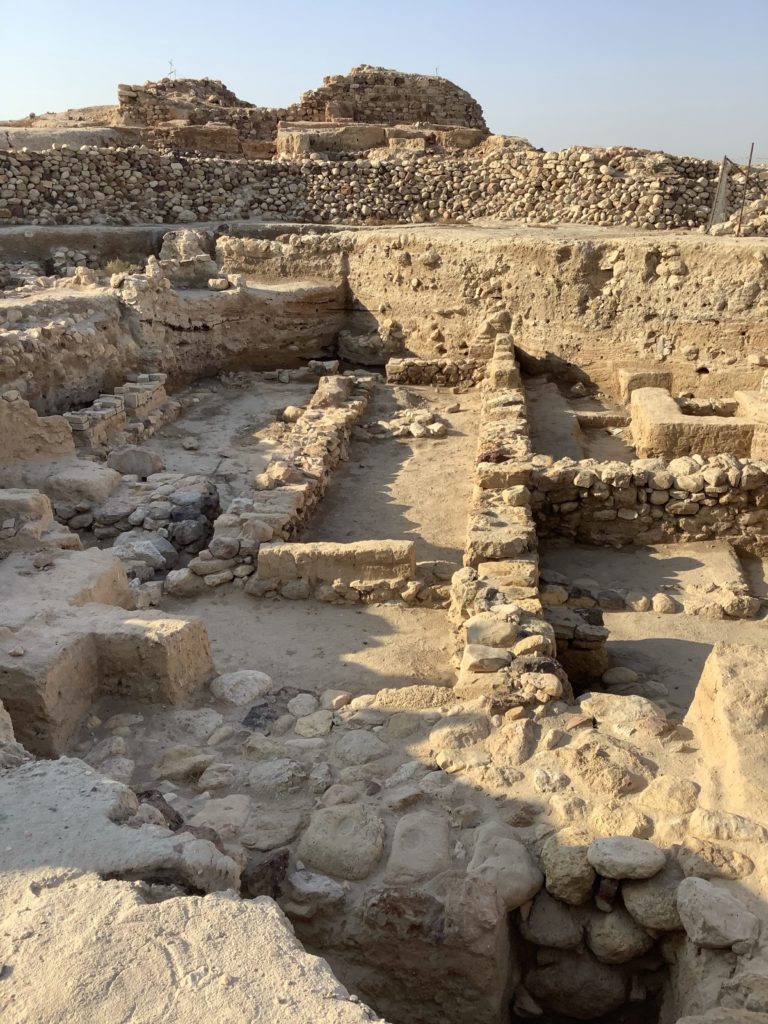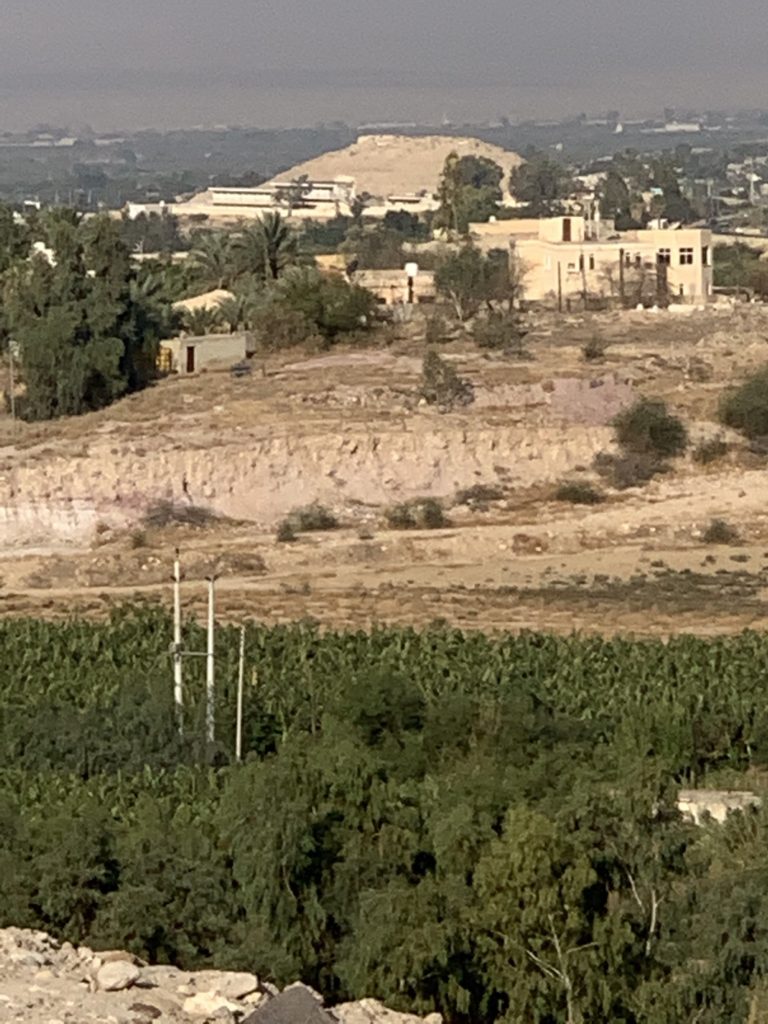For the first week of December 2019 my travels take me to the Hashemite Kingdom of Jordan with a group connected with Shepherds Theological Seminary and The West Institute. As we visit various sites of significance for biblical studies, I will post a few pictures and a brief description. Many biblical sites exist in Jordan, but many have only been partly excavated and some have yet to be excavated. We set our primary purpose on putting the biblical descriptions front and center — the first evidence to be considered. What the Bible says trumps any attempts to ignore its testimony with regard to the identifications and dating of these sites.
Tell el-Hamman / Tall el-Hammam

Tell el-Hamman (also called Tall el-Hammam and Tell el-Harman) appears best identified as the biblical site of Abel-Shittim (“Acacia Grove”), Israel’s final camp before crossing the Jordan River into Canaan (Numbers 33:49). The top of the tell sits at 425 feet below sea level in the Jordan Rift west of Amman, Jordan and east of Jericho (on the other side of the Jordan River). The tell’s location on Wadi el-Kefrein places it near the modern dam on the wadi providing water for Jordan and reducing the flow of water into the Jordan River. The Israelites, having completed 40 years in the wilderness between Egypt and the plains of Moab, committed idolatry here at Abel-Shittim and entered into the sinful practices of the Baal of Peor (Numbers 25:1–15; cf. Joshua 3:1). This is where Israel camped on the Plain of Moab before crossing the Jordan. Israel resided at Abel-Shittim while Balak hired Balaam of Pethor (along the Euphrates River, Numbers 22:5) to curse them (Numbers 24:1–25). Tell el-Hamman is a short distance away from Peor which overlooks it and where the Israelites committed idolatry and cultic prostitution (Numbers 25:1–4).
Recent attempts (see Craig Olson, “Which Site Is Sodom?”) to identify the site with Sodom ignore the clear biblical description of its location. Genesis 10:19 places it east of Gaza (which is located far south of the northern end of the Dead Sea). Jeremiah 49:18 reveals that no one would live in Sodom again — contrast that with a long history of habitation at Tell el-Hamman after the Middle Bronze on into the Iron Age. On this research trip, our visits to Tell el-Hamman, as well as those of Bab edh-Dhra and Numeira, provided abundant evidence contrary to the views of Steve Collins (“Dr. Steven Collins at Tall el-Hammam” — video). Archaeologist Joel Kramer and geologist John Whitmore both pointed out abundant biblical, geographical, archaeological, and geological evidence contradicting the northern view. No one can believe consistently in biblical inerrancy and adopt the northern site as Sodom. I agree with Bryant Wood (“Locating Sodom: A Critique of the Northern Proposal”) and Todd Bolen (“Arguments Against Locating Sodom at Tall el-Hammam”).
Note: Modern location names according to David Noel Freedman et al., eds., The Anchor Yale Bible Dictionary (New York: Doubleday, 1992) and Avraham Negev, The Archaeological Encyclopedia of the Holy Land (New York: Prentice Hall Press, 1990).
Beth-Jeshimoth

The light colored tell (mound) in the picture above has been identified as Beth-Jeshimoth (Tell ʿAzeimeh). It sits just west of Tell el-Hamman. This city dates at least to the time of Moses since he lists it in the locations associated with Israel’s journey from Egypt to Canaan (Numbers 33:49). The city is also mentioned in Joshua 12:3; 13:20; and Ezekiel 25:9.
